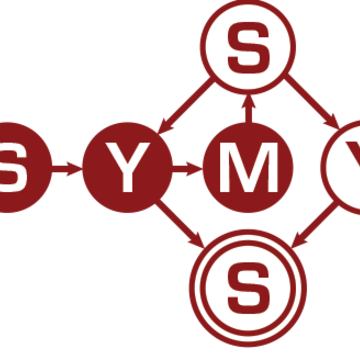SSP Forum: Haroun Ahmed and Sunwoo Lee (M.S. Candidates)

The
Symbolic Systems Forum
presents
Transformers, Humans in Disguise? Applying NLP based computational techniques to America in One Room
Haroun Ahmed (M.S. Candidate)
Symbolic Systems Program
and
Artificial Consciousness: Why It Matters and How to Approach It
Sunwoo Lee (M.S. Candidate)
Symbolic Systems Program
Monday, November 29, 2021
12:15 - 1:15 pm
Join from PC, Mac, Linux, iOS or Android (requires logging in to a Zoom account): https://stanford.zoom.us/j/99713091022?pwd=b0hna3VRUkFWWHl0TUEwcTRQYktwQT09
(Only students enrolled in SYMSYS 280 may attend in person)
ABSTRACTS:
(1) Haroun Ahmed, "Transformers, Humans in Disguise? Applying NLP based computational techniques to America in One Room" (Primary Advisor: James Fishkin, Communication Department; Second Reader: Alice Siu, Communication Department)
This project seeks to apply a scalable, NLP based computational mechanism to automate portions of the work done by the Center for Deliberative Democracy(CDD) in their Deliberative Polling project. The machine based classifier that this project is attempting to profile is intended to emulate the currently manual task of tagging transcripts of worldwide deliberations about controversial topics with the intention of 1. Extracting argument dialogue segments 2. Assessing argument deliberative quality as per the conventions set forth by the CDD and 3. Transformer aspect based context dependent sentimeint analysis. Top level, these techniques involve humans tagging transcripts using a 0, 1, 2, 2+ scale, reflecting the respective number of provided reasons to support an argument. The computational techniques that will be profiled for their capacity to replicate human tagging that this project will explore will be transformer based language models such as XLNet, a custom bag of words (BOW) + random-forest based classifier, and random chance. Empirical results have displayed an increase in model generalizability when transferring to the XLNet model, indicating a better capacity to emulate human transcript tagging across all categorizations, conversational subjects, and discussion locales.
(2) Sunwoo Lee, "Artificial Consciousness: Why It Matters and How to Approach It" (Primary Advisor: Justin Gardner, Psychology Department; Second Reader: Anna-Sara Malmgren, Inland Norway University of Applied Sciences)
Despite the rapid development in artificial intelligence, machines are nowhere close to the cognitive capabilities of humans. What could we be missing? This presentation explores the idea that consciousness is the key to human intelligence and the missing ingredient to artificial general intelligence. Any intelligence as advanced as humans or more advanced will have to be conscious, even though their consciousness may look different from ours. While consciousness as a concept appears to be extremely elusive, particularly phenomenal consciousness, this talk introduces helpful approaches to understanding consciousness in more concrete ways, thereby demystifying the idea of building artificial consciousness.
A NOTE ON THE RECORDING OF EVENTS:
If a decision has been made in advance to record an event and to make it available for later public viewing, the event announcement will usually state this. In many cases, however, decisions to record, and/or to make a recording available publicly, are not finalized before an event is announced. Availability decisions for recordings are often subject to what speakers prefer after an event has concluded, among other considerations that may include usage rights for material used in an event, as well as the need for, and practicality of, editing. When recordings are made publicly available, they will be linked within the original event announcement on the Symsys website in the days or weeks following an event. Unfortunately, we cannot follow up on individual requests for more information about whether and when a recording may become available if it is not yet posted publicly.